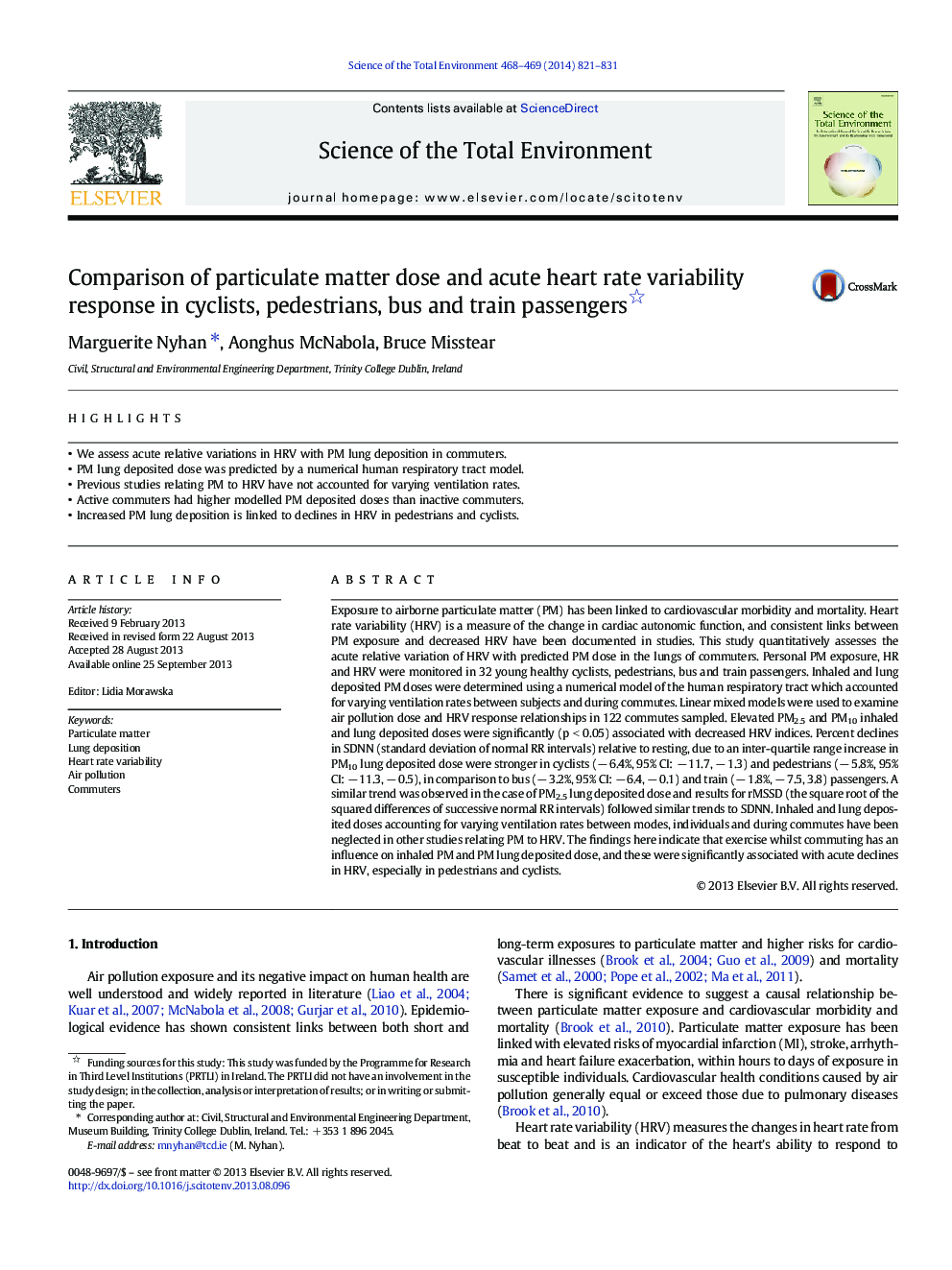| کد مقاله | کد نشریه | سال انتشار | مقاله انگلیسی | نسخه تمام متن |
|---|---|---|---|---|
| 6332642 | 1619794 | 2014 | 11 صفحه PDF | دانلود رایگان |

- We assess acute relative variations in HRV with PM lung deposition in commuters.
- PM lung deposited dose was predicted by a numerical human respiratory tract model.
- Previous studies relating PM to HRV have not accounted for varying ventilation rates.
- Active commuters had higher modelled PM deposited doses than inactive commuters.
- Increased PM lung deposition is linked to declines in HRV in pedestrians and cyclists.
Exposure to airborne particulate matter (PM) has been linked to cardiovascular morbidity and mortality. Heart rate variability (HRV) is a measure of the change in cardiac autonomic function, and consistent links between PM exposure and decreased HRV have been documented in studies. This study quantitatively assesses the acute relative variation of HRV with predicted PM dose in the lungs of commuters. Personal PM exposure, HR and HRV were monitored in 32 young healthy cyclists, pedestrians, bus and train passengers. Inhaled and lung deposited PM doses were determined using a numerical model of the human respiratory tract which accounted for varying ventilation rates between subjects and during commutes. Linear mixed models were used to examine air pollution dose and HRV response relationships in 122 commutes sampled. Elevated PM2.5 and PM10 inhaled and lung deposited doses were significantly (p < 0.05) associated with decreased HRV indices. Percent declines in SDNN (standard deviation of normal RR intervals) relative to resting, due to an inter-quartile range increase in PM10 lung deposited dose were stronger in cyclists (â 6.4%, 95% CI: â 11.7, â 1.3) and pedestrians (â 5.8%, 95% CI: â 11.3, â 0.5), in comparison to bus (â 3.2%, 95% CI: â 6.4, â 0.1) and train (â 1.8%, â 7.5, 3.8) passengers. A similar trend was observed in the case of PM2.5 lung deposited dose and results for rMSSD (the square root of the squared differences of successive normal RR intervals) followed similar trends to SDNN. Inhaled and lung deposited doses accounting for varying ventilation rates between modes, individuals and during commutes have been neglected in other studies relating PM to HRV. The findings here indicate that exercise whilst commuting has an influence on inhaled PM and PM lung deposited dose, and these were significantly associated with acute declines in HRV, especially in pedestrians and cyclists.
Journal: Science of The Total Environment - Volumes 468â469, 15 January 2014, Pages 821-831